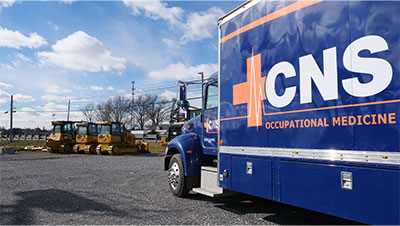As we ease out of the COVID-19 pandemic that has led workers to retire early or find new jobs, employers are struggling with a competitive hiring market.
The question human resource managers are asking is, how do companies not only get employees back, but keep them back?
For decades companies have been solely focused on workers’ health for safety-sensitive positions. However, the pandemic has highlighted the need of a balanced worker’s health plan for all employees.
This is where HR professionals should analyze the old ways of doing things and start considering revamping the worker’s health and safety programs.
Where do I start when reviewing current workers’ health programs?
The most important place to start is considering the types of health risk your employees face and then creating a plan to reduce the risk once the health risk is identified.
Workers’ compensation can be time-consuming and financially draining for small business owners if their employees suffer job-related injuries.
It is too expensive and time consuming to not have a health and safety plan in place for employees. Sending your employees to an urgent clinic or emergency room will cost your company much more than the bill for services.
Companies also need to consider the time the employee is after the incident occurs, during follow-up appointments, and the delay in productivity.
How To Ensure A Worker’s Injury Does Not Ruin Your Business
The second thing to consider, when reviewing the employer workers’ health program, is OSHA worker rights and protections.
Under the OSH law, employers have a responsibility to provide a safe workplace.
Key employer responsibilities include:
- Provide a workplace free from serious recognized hazards and comply with standards, rules and regulations issued under the OSH Act.
- Examine workplace conditions to make sure they conform to applicable OSHA standards.
- Make sure employees have and use safe tools and equipment and properly maintain this equipment.
- Provide medical examinations and training when required by OSHA standards.
- Provide access to employee medical records and exposure records to employees or their authorized representatives.
- Employers with hazardous chemicals in the workplace must develop and implement a written hazard communication program and train employees on the hazards they are exposed to and proper precautions (and a copy of safety data sheets must be readily available).
Depending on your industry, the regulatory rules can be quite complicated and strict. Our providers have a thorough understanding of federal and state regulations including OSHA and DOT, so they can make the best treatment plans and perform regulatory examinations.
What to consider when revamping the entire health program

Now that the basic groundwork is established, it is time to consider the many opportunities to build a well-balanced health and safety program.
In your research, you may have found that some of your staff needs pre-employment or on-going physicals and medical check-ups, you may need audiogram testing, respirator checks, blood draws, x-rays, or other biometric screening.
You may also be considering a trending nurse injury hotline, or a nurse triage, that allows employers to respond to workplace injuries the day the injury occurs and help workers determine the best course of action after an injury. These programs can help provide self-care instruction or direct the individual to an appropriate level of care.
No matter if you are a construction company, manufacturing company, warehouse facility, or a smaller health care office (dentists, dermatology, veterinarian, etc.), training shift managers on basic health treatment can be another big step to treat an injured employee. Injuries that are non-life and limb threatening can be dealt with immediately and the employee can be sent to a more affordable Occupational Medicine office first thing in the morning.
The best way to keep the workplace safe is to enforce safety rules, establish a drug and alcohol testing policy, provide regular safety training, and work with an occupational medicine provider that can be staffed on-site or have a mobile health clinic to reduce employee downtime away from the office.
As we all know, hospitals have long wait times, expensive healthcare costs, and are not focused on balancing worker and employer needs.
At CNS, our Occupational Medicine team partners with you to provide cost-effective, comprehensive occupational medicine services including treatment of work-related illnesses and injuries to help your employee get back to work quickly and safely.
How can CNS Occupational Medicine help?
Our Physician’s, Nurse Practitioners and Physician’s Assistants are trained to treat non-life and limb threatening injuries including lacerations, burns, sprains/strains, chemical exposures, eye injuries and crush injuries.
We understand the impact that lost time, limited duty, and medical costs have on the company and the employee. We also have a strong understanding of the OSHA recordkeeping rule and how certain medical diagnosis and treatments impact your OSHA 300 log.
Our main goal is to return your employee to full duty as quickly and safely as possible.
We recognize that each employer is unique, therefore we will maintain your standard operating procedures and communicate with your assigned points of contact.
Some of our services include:
- Evaluation and treatment of work-related injuries
- Work status summaries (provided to employer after each patient visit)
- In-house X-rays
- Post-accident drug and alcohol testing
- Return-to-Work evaluations
- Case Management (continued care coordination)
For more information, contact us at 800.551.9816 or info@cnsoccmed.com.










